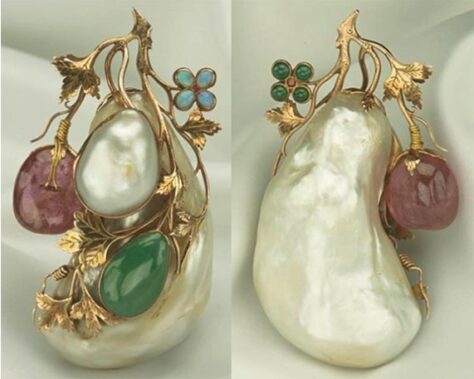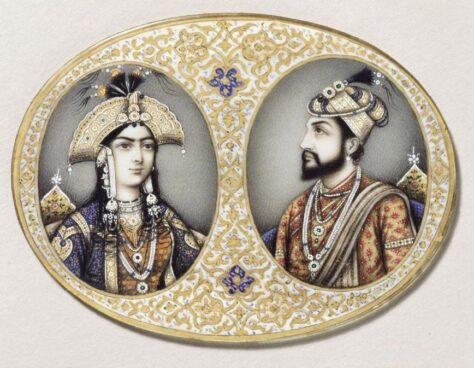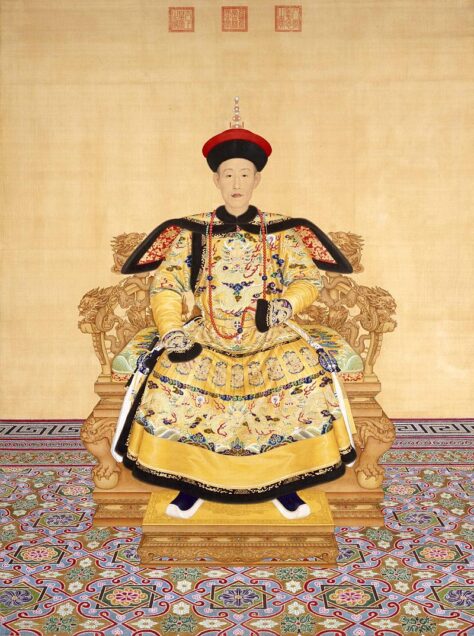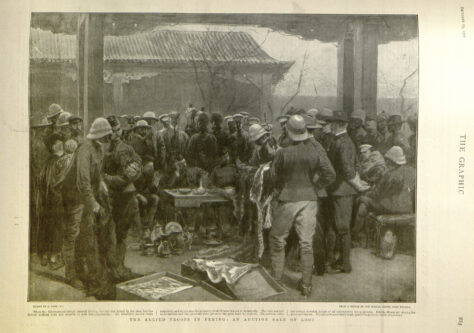The Pearl of Asia, an adventurous life
Pour lire cet article en français, veuillez cliquer ici.
Claudine Seroussi Bretagne
Gemstones often live adventurous lives – none more so than the Pearl of Asia.
At approximately 605 carats, and measuring 76 x 50 x 28 mm, it is the largest nacreous pearl in the world. A photograph taken in 1945 gives a sense of the scale of the pearl.

The large egg-shaped pearl was renowned not only for its size but also its silvery colour and a lustre that “provides a mirror for one’s whole face.” Mounted in a gold setting in a bunch of fruits style with a jade cabochon, smaller pearl and rose quartz representing other fruits, it is reminiscent of 16th and 17th-century designs despite being executed [possibly in Europe] between 1900-1930

The pearl first appeared in 17th-century India and is believed to have originated from the Persian Gulf. It was purchased in Bombay by the agents of Mughal Emperor Shah Jahan (1592-1666), who was renowned for his vast jewellery collection that included the Koh-i-Nor and whose court was famed for its extravagance, great pomp and pageantry.
Shah Jahan gifted the pearl to his second and favoured wife, Mumtaz Mahal (1593-1631).

After his death, the pearl was passed through the hands of lesser Mughal Emperors. In 1739, Nader Shah of Persia (1688-1747) defeated the Mughal army and seized Delhi, the capital, as well as the Mughal emperor’s jewels, including the Pearl of Asia.

Nader Shah gifted several jewels that he seized from the Mughal empire to other sovereigns including Catherine the Great and Sultan Mahmud of the Ottoman Empire. To the Chinese Emperor Qianlong (1711-1799), he gifted the Pearl of Asia. Qianlong considered the pearl a valuable possession, so much so that it was placed in his mausoleum upon his death.

During the bloody boxer rebellion of 1900, alongside the executions and pillages, extensive looting of Peking was committed by all the forces of the 8-nation alliance (France, Austro-Hungary, Italy, Russia, Germany, Britain, USA and Japan). The British Army regulated the looting by holding daily auctions, except Sundays, at Protestant and Catholic Churches. These auctions were always crowded and attracted people of all nationalities.

Qianlong’s tomb was subjected to looting, and the pearl once more disappeared. The pearl resurfaced in Hong Kong some years later when a mandarin sold it to a French missionary, and it became the property of the French Foreign Missions Society of Paris (MEP).
1930 marked the first failed attempt by the MEP to sell the pearl in partnership with the pearl’s co-owner, Major Mohideen, a Singaporean gem dealer. It was placed for sale in Shanghai, with an asking price of $1,500,000. Mohideen stated that he lived in seclusion, fearing being kidnapped and forced to relinquish the jewel.
In 1942 it resurfaced again and was finally sent to France to be sold as the Missions urgently needed to raise money. The pearl arrived in Paris and was shown to various jewellers with a price tag of approximately $150,000. However, the Germans became aware of the existence of the pearl and forced the MEP’s emissary to deposit it in a bank until permission was granted to remove it. At one stage, Goering showed interest in adding it to his collection, but nothing came of it.
In 1944 the MEP tried once more to sell it. A buyer was found, and a viewing appointment was arranged, during which four “SS men” burst into a room where the French experts were examining the pearl and took the pearl, its gold case and valuables worth 15,000 francs of other valuables at gunpoint. They claimed that the MEP had no right to sell the pearl, and they took off with it. The culprits were not SS men but Yvon Collette, his wife Georgette and three associates. They were arrested and questioned but denied knowing where the pearl was. With all leads having gone cold, it was assumed the pearl had left France.
With the liberation of Paris, the Collettes managed to escape custody. Yvon fought in the siege of Paris, and Georgette returned to Marseille, where she removed the pearl from the Oak tree where she had hidden it in 1944 and awaited Yvon’s return. Yvon tried to sell the pearl after the allied landings but could not find a buyer. He was arrested once more, and the pearl was eventually discovered by a hotel landlord in an overflowing toilet in Collette’s room, where she had hidden it during a police raid.

During the 1945 trial, Collette and his accomplices claimed that they were members of the Resistance and said that they had taken it to stop it falling into the hands of Goering, who coveted the pearl.

Collette said he wanted to present it personally to Charles De Gaulle. The theft and subsequent trial garnered press coverage across the world. Yvon, a Belgian national, was both a member of the Resistance and a German collaborator and although it remains unclear where his allegiances lay, this theft was undoubtedly self-serving. The trial was postponed in November 1945 so Collette could round up resistance leaders to support his claims.
By the time the trial reopened in May 1946, Yvon, deemed mentally unstable, was placed in a mental hospital for observation and from which he staged an audacious escape (he gnawed his way through a straitjacket). He was sentenced, in absentia, to 10 years imprisonment and a fine of 50,000 francs. Collette and an accomplice were sentenced to 2 and 5 years for their complicity in the crime.
And the Pearl of Asia?
The MEP reclaimed the pearl in 1945, and it was again put up for sale, this time for $500,000. It is unclear when it finally sold and to whom. In 2005 The Pearl of Asia was one of the world’s twelve rarest pearls, which went on public display for the first time in the “Allure of Pearls” exhibition held at the NMNH of the Smithsonian Institution. Although Christie’s facilitated the anonymous loan, it was reported that the Pearl of Asia shared the same owner as the Hope Pearl – a private collector based in England.
It remained in private hands and was last seen in public at the V&A’s 2013 “Pearls” exhibit.
***
Follow her on her wonderful Instagram account :
Instagram @ Art of the Jewel